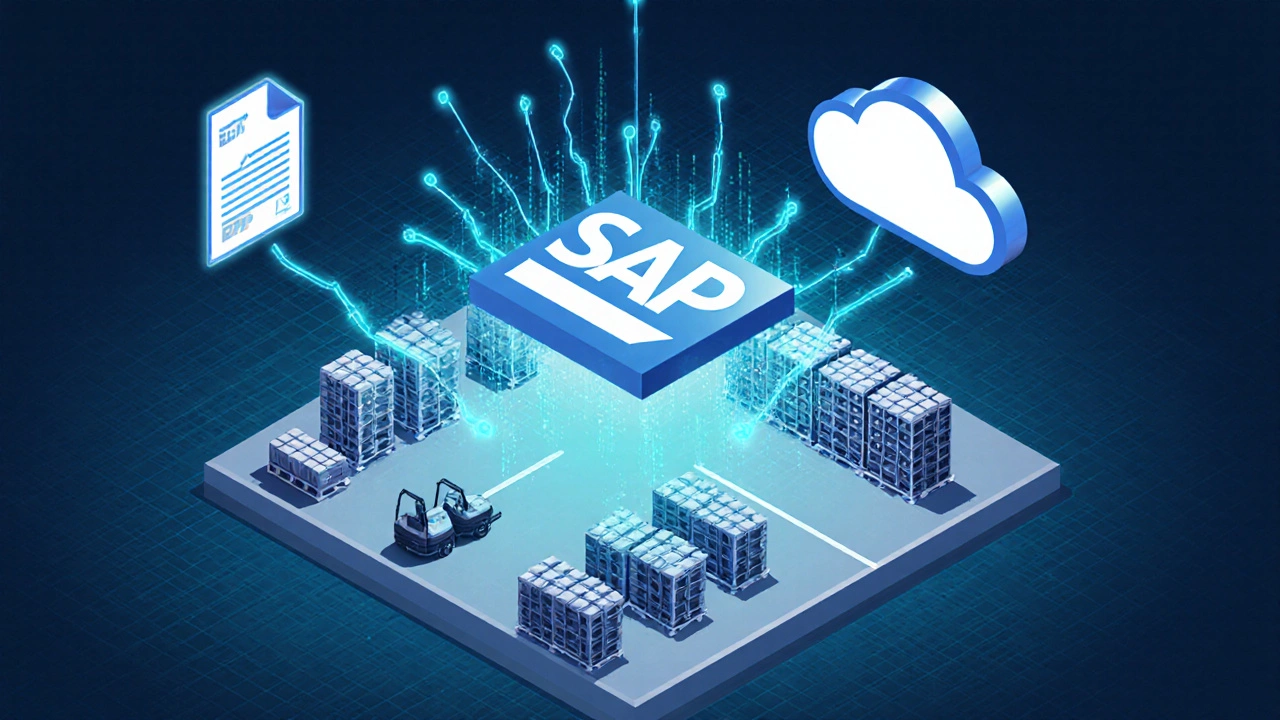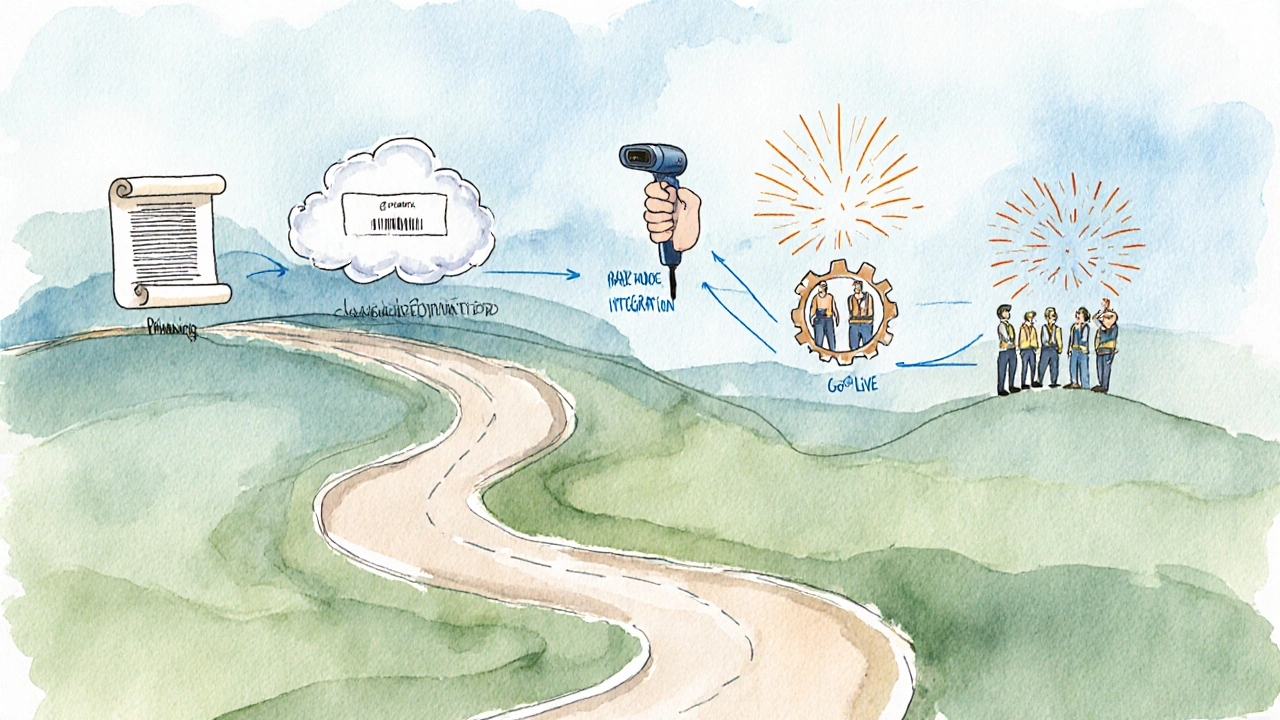What SAP Stands for in Warehousing and How It Transforms Warehouse Management

SAP Warehouse Module Selector
Which SAP Module is Right for Your Warehouse?
Answer a few questions to determine if SAP Warehouse Management (WM) or Extended Warehouse Management (EWM) is the best fit for your operations.
Your Recommended SAP Module
Why This Recommendation?
- Key Features:
- Implementation Timeline:
- Best For:
When you hear the term SAP is a global software company whose flagship product helps businesses run their operations, you might think it only belongs to finance or HR. In reality, SAP is a cornerstone of modern warehousing, powering everything from slotting to real‑time inventory visibility. This guide unpacks what SAP actually stands for, how its warehouse‑specific modules work, and what you need to know before bringing it into your facility.
What Does SAP Actually Stand For?
The acronym SAP originated in the early 1970s. It stands for Systems, Applications & Products in Data Processing. The name reflects the company’s mission: to deliver integrated software that connects every business function, turning raw data into actionable insight. While the full name is rarely used in day‑to‑day conversations, understanding it helps you see why SAP’s solutions are built to be modular, scalable, and data‑centric - all critical qualities for a warehouse management system.
Why SAP Matters in Warehousing
Warehouses are no longer static storage yards. Today they are dynamic hubs where orders are picked, packed, and shipped in minutes. SAP’s deep integration with enterprise resource planning (ERP) means the moment a sales order lands in the system, the warehouse side knows exactly what to do. This eliminates manual hand‑offs, reduces errors, and provides a single source of truth for inventory.
Key SAP Warehouse Modules
Two main SAP solutions address warehouse needs:
- SAP Warehouse Management (SAP WM) is the classic warehouse module that runs on SAP ECC and SAP S/4HANA. It handles inbound/outbound processes, stock transfers, and basic put‑away strategies.
- SAP Extended Warehouse Management (SAP EWM) is an advanced, standalone warehouse engine designed for high‑volume, complex distribution centers. EWM offers sophisticated slotting, labor management, and yard logistics.
Both modules sit on top of SAP’s core ERP, but they differ in depth, flexibility, and typical deployment size.

Benefits of Using SAP for Warehouse Management
Implementing SAP (whether WM or EWM) brings a suite of tangible advantages:
- Real‑time inventory visibility: Every receipt, move, or adjustment updates the system instantly, enabling accurate stock levels across multiple locations.
- Process automation: Wave creation, task allocation, and dock scheduling can be driven automatically by business rules, reducing reliance on manual spreadsheets.
- Integration with finance and sales: Costs flow directly into accounting, while order status feeds back to the sales team - a true end‑to‑end flow.
- Scalability: SAP’s modular architecture lets you start with core WM functions and later add EWM capabilities as your volume grows.
- Compliance and traceability: Built‑in batch, serial, and expiration tracking meet regulations in food, pharma, and aerospace.
Implementation Roadmap: From Planning to Go‑Live
Rolling out SAP in a warehouse is a multi‑phase effort. Below is a practical step‑by‑step checklist that most companies follow:
- 1. Define business requirements: Map current processes, identify bottlenecks, and decide whether WM or EWM fits your complexity.
- 2. Choose the deployment model: On‑premise, private cloud, or SAP Business Technology Platform (BTP) SaaS determines hardware, licensing, and upgrade cadence.
- 3. Conduct a fit‑gap analysis: Compare SAP standard functionality with your custom needs; decide what can be configured vs. what requires enhancements.
- 4. Set up master data: Create material master records, storage bin hierarchies, and handling unit types. Clean data at this stage prevents costly rework later.
- 5. Configure warehouse processes: Define put‑away strategies (e.g., FIFO, LIFO), picking methods (wave, zone, pick‑to‑light), and shipping checks.
- 6. Integrate with hardware: Connect barcode scanners, RFID readers, and warehouse control systems (WCS) via SAP’s standard interfaces.
- 7. Run pilot tests: Start with a single zone or product line, measure key performance indicators (KPIs) like pick accuracy and labor efficiency.
- 8. Train the workforce: Hands‑on workshops for supervisors, pickers, and IT staff ensure smooth adoption.
- 9. Go‑live and hyper‑care: Switch from legacy to SAP on a pre‑defined date, then monitor performance intensively for 4-6 weeks.
Following a disciplined roadmap reduces risk and keeps the project on budget.

Comparing SAP WM and SAP EWM
Choosing between WM and EWM hinges on warehouse size, process complexity, and growth plans. The table below highlights the key differentiators.
| Feature | SAP WM | SAP EWM |
|---|---|---|
| Typical deployment size | Small‑to‑mid‑size (up to 50,000 SKUs) | Large‑scale, high‑throughput (100,000+ SKUs) |
| Advanced slotting & rearrangement | Basic rules (e.g., fixed bins) | Dynamic, algorithm‑driven slotting |
| Labor management | Limited, manual time‑capture | Integrated labor planning, performance dashboards |
| Yard & dock logistics | Manual scheduling | Automated yard management, gate‑in/out automation |
| Integration with SAP S/4HANA | Embedded as a module | Standalone engine with tighter S/4HANA coupling |
| Implementation timeline | 3-6 months (standard) | 6-12 months (complex) |
For most mid‑market distributors, SAP WM offers a quick win. Enterprises handling thousands of orders per hour, or those needing sophisticated yard management, usually opt for SAP EWM.
Common Pitfalls and Pro Tips
Even with a robust system like SAP, warehouses can stumble if they overlook these details:
- Data hygiene: Inaccurate master data feeds ghost inventory. Run a data cleanse before go‑live.
- Over‑customization: Every custom code adds upgrade risk. Leverage SAP’s standard extensions wherever possible.
- Neglecting change management: Front‑line staff often resist new screens. Involve pickers early in UI design.
- Poor hardware integration: Barcode scanners that don’t talk SAP cause double entry. Test all devices in a sandbox first.
- Ignoring KPI baselines: Without pre‑implementation metrics, you can’t prove ROI. Track pick accuracy, order cycle time, and labor cost before and after.
Following these tips keeps the project on track and maximizes the value of SAP warehouse management investment.
Mini FAQ - Quick Answers to Common Questions
What does SAP stand for?
SAP stands for Systems, Applications & Products in Data Processing, reflecting its origins as a suite of integrated business applications.
Is SAP WM still relevant after SAP S/4HANA?
Yes. SAP WM is fully supported on S/4HANA and remains a solid choice for mid‑size warehouses that don’t need the advanced features of EWM.
How does SAP EWM improve picking efficiency?
EWM uses real‑time task interleaving, wave planning, and integration with pick‑to‑light or voice picking hardware, which reduces travel distance and idle time for pickers.
Can SAP integrate with non‑SAP warehouse hardware?
Absolutely. SAP provides standard IDoc, BAPI, and OData interfaces that allow barcode scanners, RFID readers, and third‑party WCS systems to communicate seamlessly.
What licensing model does SAP use for its warehouse modules?
SAP offers both perpetual licensing (on‑premise) and subscription‑based cloud licensing. Costs are usually calculated per user plus a per‑transaction or per‑SKU factor for the warehouse engine.
Armed with this knowledge, you can decide whether SAP’s warehouse suite aligns with your operational goals and budget. Whether you start with WM for a quick win or dive straight into EWM for full‑blown automation, SAP’s integrated approach promises a single source of truth that scales as your distribution network grows.